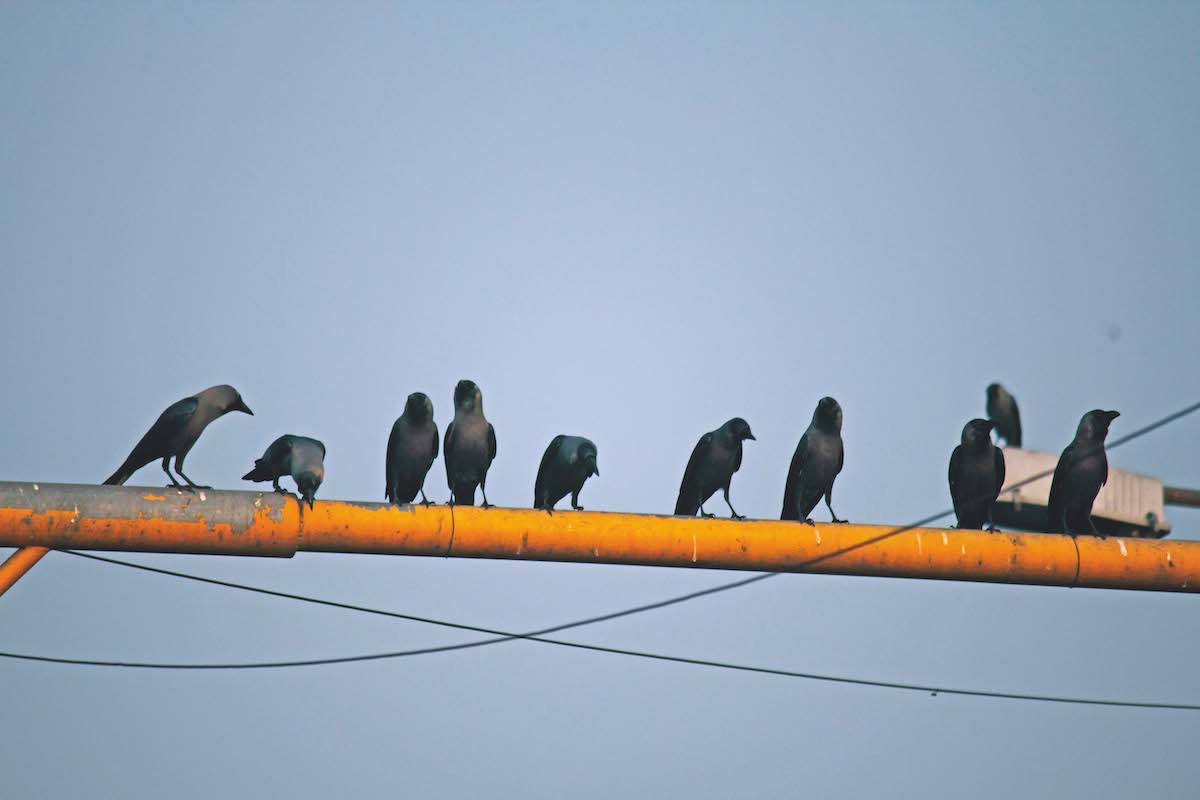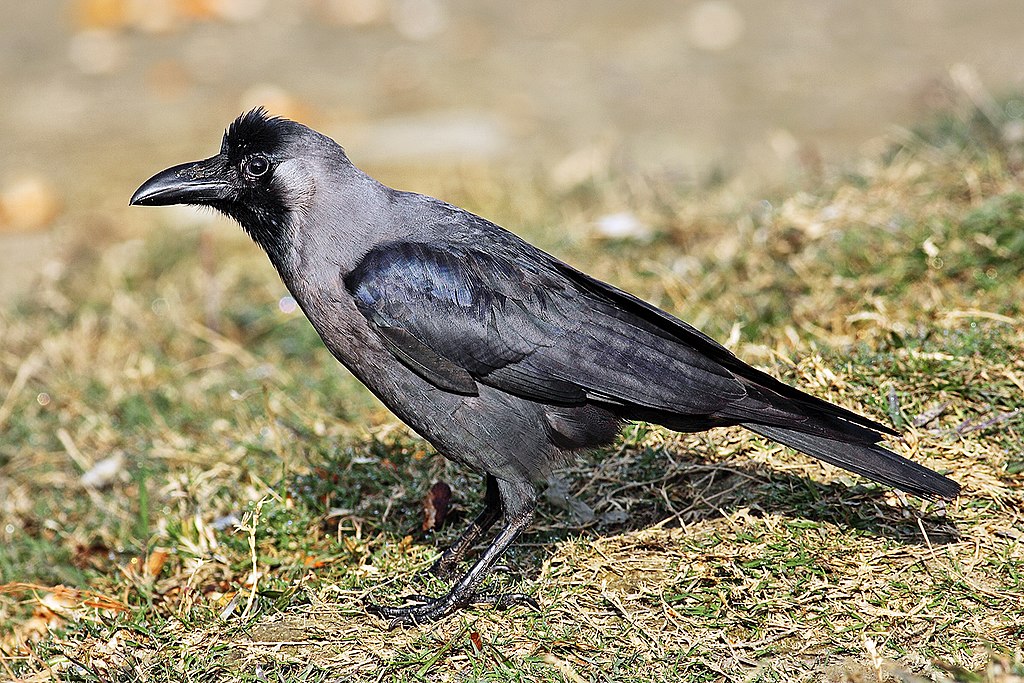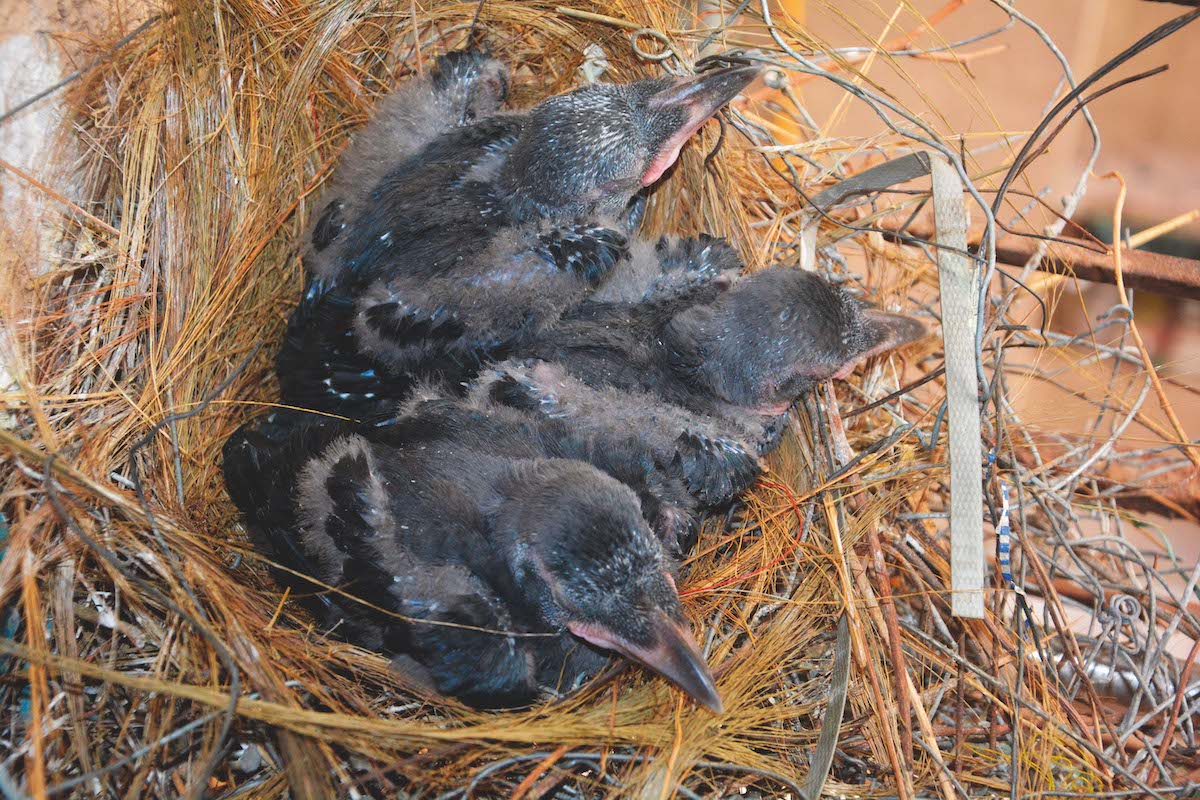News
The Indian house crow: an invasive urbanite that makes itself at home
Would you like to speak to our readers? We offer sponsored articles and advertising to put you in front of our audience. Find out more. D45HTB House Crow, Corvus splendens
D45HTB House Crow, Corvus splendens
The Indian house crow does not as yet exist in any great numbers in Europe, but that has not stopped it being added to the EU List of Invasive Alien Species, nor has it halted the issue of general licences to enable its control in the UK.
Spread of the Indian house crow
How the Indian house crow has spread from its native range on the Indian subcontinent is somewhat unclear, as it is not a migratory species, but the consensus is that most movement has been as a passenger on ships. New sightings seem to back this up, coming mainly from port or coastal areas, and there have been numerous reports of it being seen in the UK.
In some parts of the world, they have been introduced deliberately to control agricultural and house pests, or even to clear garbage by their scavenging, but this has been largely recognised to be a mistake that has created wider problems.

The Indian house crow
Appearance
The bird is midway in size between a jackdaw and a carrion crow, the grey and black plumage of the Indian house crow might initially cause it to be mistaken for the hooded crow familiar across northern parts of the UK. It is, however, a smaller and more slender bird, its glossy jet-black plumage broken by a grey neck and chest. The face, chin, crown of the head and throat are black.
The scientific name of Corvus splendens translates as ‘shining raven’ in recognition of its overall appearance, though the plumage of young birds is duller than that of adults. This is a highly intelligent bird, like so many others of the crow family, and it is always wary and alert. It is also sociable and can congregate in large, noisy flocks that are often shared with other species, such as parakeets and mynahs, in their native countries.
Foraging takes place throughout the day before the flocks congregate at their roosting sites, returning to the feeding grounds again before first light. House crows often choose to settle for the night in communal roosts close to urban areas and very often over busy streets. They have been known to favour well-lit parts of towns and cities where there are large amounts of human activity, which does not seem to deter them. The sites chosen are usually in the close proximity of food sources. Tall trees are mainly used, and the shelter afforded by any surrounding buildings seems to be favoured.

Fledglings leave the nest around three to four weeks after hatching
Concern
The main concerns about the bird stem from its close association with human settlements, where it scavenges on discarded food, rubbish dumps and landfill, bringing with it potential risks to human health. Indeed, it is so dependent on human presence that it is almost never found away from it. There are also conservation concerns, as this bird is an opportunistic feeder that will eat just about anything that is available. It is known to predate other birds and small mammals, making it a threat to native species. Also, it may compete aggressively with them for feeding opportunities and nesting sites.
In its native range, it also has a reputation as an agricultural pest, destroying fruit, wheat, grapes and maize crops, and it is known for taking the eggs and chicks of domestic poultry. A self-sustaining breeding population now exists in the Netherlands, and there are fears that this could spread elsewhere too.
Experience from other countries where it has been introduced have made it clear that this species has the capacity to establish itself in most urban areas across Europe. And it has certainly done well elsewhere, though a timely response to arrivals in Australia seemed to result in it being stopped in its tracks. If it does seek to establish itself in the UK, it has the potential for rapid spread, given its readiness to exploit the opportunities offered by urban areas, and it will be necessary to act fast to ensure that it does not establish with potentially far-reaching effects.
Indian house crow facts
- DISTRIBUTION Widespread across southern Asia, ranging from Pakistan and eastern Afghanistan across India to Myanmar and south-west Thailand. Widely introduced elsewhere, with extensive naturalised populations in places as far apart as eastern Africa and Singapore, and also present in some parts of Europe.
- IUCN RED LIST STATUS Least Concern; numbers stable.
- HABITAT Usually associated with human settlements, from villages to large cities across its range, also coastal areas and landfill. It is seldom found far from human habitation.
- FOOD An omnivorous and highly opportunistic scavenger that feeds heavily on human refuse. Also readily takes small reptiles and mammals, eggs, nestlings, grain, fruit, and most other things that are edible.
- BREEDING House crows are monogamous and form long-term pair bonds. Peak breeding period in the native range is between April and July but varies according to location.
- NESTING The untidy stick nest is built in the upper branches of trees, preferably larger ones with thick crowns. A tree may contain several nests. Sometimes pylons, telephone towers or the ledges of buildings are used. Two clutches of eggs may be produced during each nesting season and are incubated by both parents. The fledglings leave the nest around three to four weeks after hatching.
- CLUTCH SIZE Three to five eggs.
- INCUBATION TIME 15-17 days.
- LENGTH (AVERAGE) 40-44cm; males slightly larger.
- WINGSPAN (AVERAGE) 75cm.
- WEIGHT (AVERAGE) 245-370g.
- LIFESPAN (AVERAGE) Normally around six to eight years.
- FLIGHT SPEED Around 32mph.
- SHOOTING SEASONS May be controlled in England under the terms of general licences 40 and 42 (as issued on 1 January 2022 and valid until 31 December 2023) for the purposes of conserving wild birds of concern, or prevention of damage to crops, fruit and vegetables.
Related articles
News
Duke's Challenge raises record-breaking £685,000 for GWCT
The shooting community has backed wildlife conservation in spectacular fashion, raising a record-breaking £685,000 for GWCT
By Time Well Spent
News
‘So what exactly do you lot do, then?’
You’d be surprised how many projects staff and volunteers deliver, as well as BASC’s vital work helping members, says Conor O’Gorman
By Time Well Spent
Manage Consent
To provide the best experiences, we use technologies like cookies to store and/or access device information. Consenting to these technologies will allow us to process data such as browsing behavior or unique IDs on this site. Not consenting or withdrawing consent, may adversely affect certain features and functions.
Functional Always active
The technical storage or access is strictly necessary for the legitimate purpose of enabling the use of a specific service explicitly requested by the subscriber or user, or for the sole purpose of carrying out the transmission of a communication over an electronic communications network.
Preferences
The technical storage or access is necessary for the legitimate purpose of storing preferences that are not requested by the subscriber or user.
Statistics
The technical storage or access that is used exclusively for statistical purposes.
The technical storage or access that is used exclusively for anonymous statistical purposes. Without a subpoena, voluntary compliance on the part of your Internet Service Provider, or additional records from a third party, information stored or retrieved for this purpose alone cannot usually be used to identify you.
Marketing
The technical storage or access is required to create user profiles to send advertising, or to track the user on a website or across several websites for similar marketing purposes.





